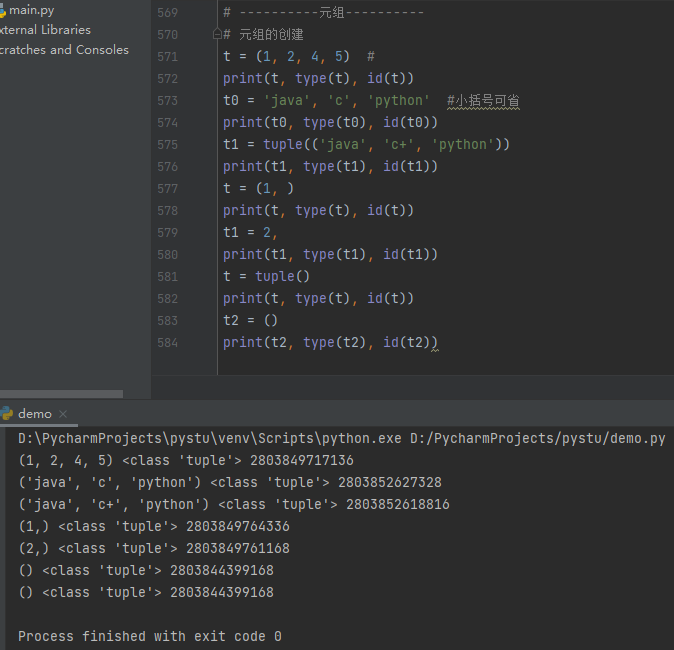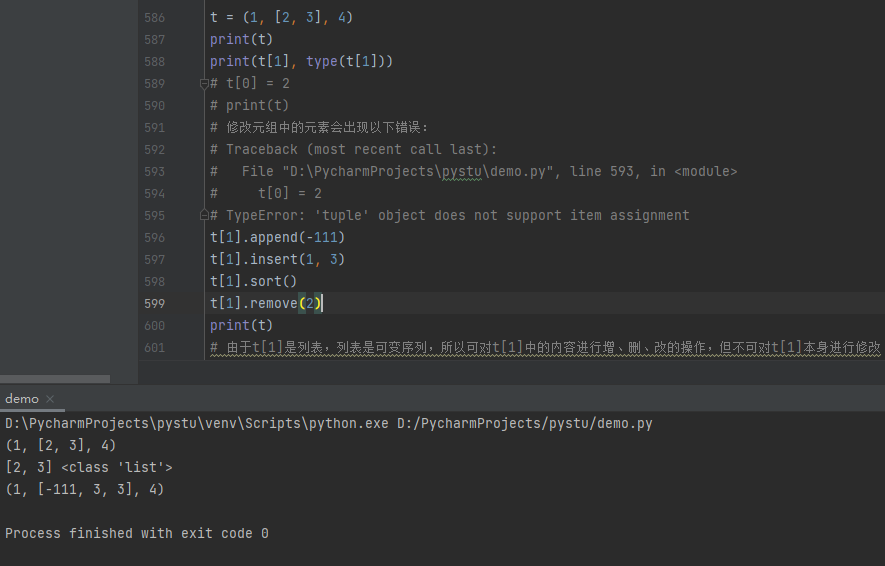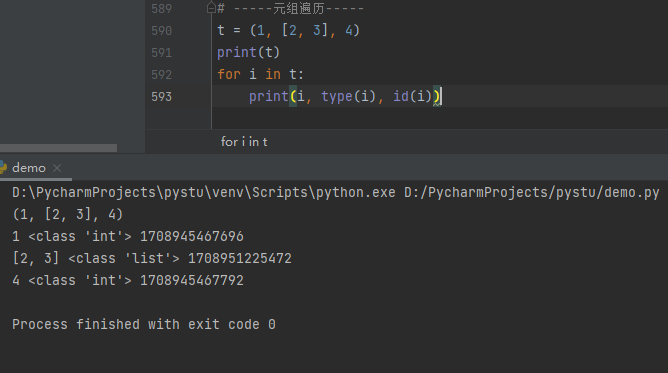python基础 12. 元组
元组
什么是元组
元组(tuple)是Python内置的数据结构之一,是不可变序列
可变序列和不可变序列
不可变序列:字符串、元组(没有增删改的操作)
可变序列:列表、字典(可对序列执行增删改的操作,对象地址不发生改变)
元组的创建方式
1.直接小括号创建,这种方法的小括号可省略
2.使用内置函数tuple()创建
3.只包含一个元组的元素需要在元素后加,
1 2 3 4 5 6 7 8 9 10 11 12 13 14 15 16 | # ----------元组----------# 元组的创建t = (1, 2, 4, 5) #print(t, type(t), id(t))t0 = 'java', 'c', 'python' #小括号可省print(t0, type(t0), id(t0))t1 = tuple(('java', 'c+', 'python'))print(t1, type(t1), id(t1))t = (1, )print(t, type(t), id(t))t1 = 2,print(t1, type(t1), id(t1))t = tuple()print(t, type(t), id(t))t2 = ()print(t2, type(t2), id(t2)) |

元组为什么是不可变序列
在多任务环境下,同时操作对象是不需要加锁因此在程序中尽量使用不可变序列
注意:元组中存储的是对象的引用
如果元组中对象本身是不可变对象,则不能引用其他对象
如果元组中对象时可变对象,则可变对象的引用不允许改变,但数据可以改变
1 2 3 4 5 6 7 8 9 10 11 12 13 14 15 16 | t = (1, [2, 3], 4)print(t)print(t[1], type(t[1]))# t[0] = 2# print(t)# 修改元组中的元素会出现以下错误:# Traceback (most recent call last):# File "D:\PycharmProjects\pystu\demo.py", line 593, in <module># t[0] = 2# TypeError: 'tuple' object does not support item assignmentt[1].append(-111)t[1].insert(1, 3)t[1].sort()t[1].remove(2)print(t)# 由于t[1]是列表,列表是可变序列,所以可对t[1]中的元素进行增、删、改的操作,但不可对t[1]本身进行修改 |

元组遍历
元组是可迭代对象,可以使用for..in进行遍历

1 2 3 4 5 | # -----元组遍历-----t = (1, [2, 3], 4)print(t)for i in t: print(i, type(i), id(i)) |






【推荐】国内首个AI IDE,深度理解中文开发场景,立即下载体验Trae
【推荐】编程新体验,更懂你的AI,立即体验豆包MarsCode编程助手
【推荐】抖音旗下AI助手豆包,你的智能百科全书,全免费不限次数
【推荐】轻量又高性能的 SSH 工具 IShell:AI 加持,快人一步
· 【自荐】一款简洁、开源的在线白板工具 Drawnix
· 没有Manus邀请码?试试免邀请码的MGX或者开源的OpenManus吧
· 园子的第一款AI主题卫衣上架——"HELLO! HOW CAN I ASSIST YOU TODAY
· 无需6万激活码!GitHub神秘组织3小时极速复刻Manus,手把手教你使用OpenManus搭建本
· C#/.NET/.NET Core优秀项目和框架2025年2月简报